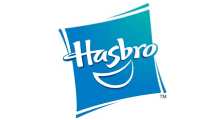 Hasbro released a Paper and Forest Procurement Policy outlining its procurement decisions for product packaging, as well a 2011 goal to source at least 75 percent of paper packaging from either recycled material or sources that practice sustainable forest management.
Hasbro released a Paper and Forest Procurement Policy outlining its procurement decisions for product packaging, as well a 2011 goal to source at least 75 percent of paper packaging from either recycled material or sources that practice sustainable forest management.
By 2015, the company aims to achieve 90 percent usage of these materials and sources for all of paperboard packaging and in-box game content, Hasbro said.
The policy implementation follows a review of its supply chain, and it also sets stringent vendor requirements for credible third-party certification of fiber.
Hasbro is requiring that no sources of mixed tropical hardwood (MTH) virgin fiber be used in products, including packaging. Earlier this year, Hasbro directed suppliers to stop using paper coming from unsustainably managed forests.
The company has also received Forest Stewardship Council (FSC) certification for its U.S. manufacturing facility and is pursuing similar certification for its manufacturing facility in Ireland.
The toymaker's new policy follows the actions of other corporations in the industry.
Mattel reviewed its sources for packaging after it was the target of a Greenpeace activism stunt in June this year. Greenpeace launched the campaign because it says Mattel has been destroying rainforests in Indonesia for disposable packaging.
By July, due to the Greenpeace campaign, Lego had joined Mattel, reportedly agreeing to drop a specific supplier, Asia Pulp and Paper, and begin to source packaging material certified by the Forest Stewardship Council.
Elsewhere in paper and packaging, Epson will begin supplying a BPA (Bisphenol A) free, recycled thermal receipt paper made with 70 percent post-consumer waste. The paper was developed by Thermal Solutions International (TSI), and Epson has exclusive rights to the paper in North America, Epson said.
BPA has been a growing concern; the EPA has taken steps to put BPA on its "Concern List" and identify the substance as one that may present an unreasonable risk of injury to the environment.
According to the New York Times, BPA is often used as a color developer for the printing dye used on thermal receipts. About 30 percent of the thermal paper can enter the recycling stream, introducing BPA into products like toilet paper, napkins and food packaging.
The Time article refers to a study which found that 100 percent of the receipts collected in the U.S. contained BPA – even some marketed as "BPA-free."